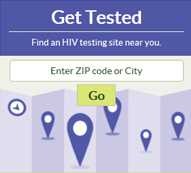National Black HIV/AIDS Awareness Day
Dear Colleague,
February 6, 2017
February 7 is National Black HIV/AIDS Awareness Day, a day to come together as a community to stop HIV among blacks/African Americans by encouraging blacks to talk about HIV, get tested, and help reduce stigma surrounding this disease. The theme, I Am My Brother’s and Sister’s Keeper: Fight HIV/AIDS, emphasizes our shared responsibility to ensure that family, friends, and neighbors have the knowledge and resources to prevent HIV infections and get the care they need to stay healthy if they are living with HIV.
Blacks are the racial/ethnic group most affected by HIV in the United States, and young black gay and bisexual men have been particularly affected. However, we have made progress in recent years:
- After steep increases, HIV diagnoses among black gay and bisexual men, including those aged 13 to 24, have stabilized since 2010.
- HIV diagnoses among blacks who inject drugs were cut in half from 2008 through 2014, and blacks who inject drugs (in 22 cities with a high number of HIV cases) report lower rates of syringe sharing than whites or Hispanics/Latinos.
- From 2010 through 2014, new HIV diagnoses among black women fell 24%.
A study published last week in CDC’s Morbidity and Mortality Weekly Report (MMWR), “Changes in the Disparity of HIV Diagnosis Rates Among Black Women—United States, 2010-2014,” suggests that the disparity in HIV diagnosis rates for black women, compared to Hispanic/Latina and white women, may be decreasing, a good sign that targeted prevention efforts are working. However, disparities have not disappeared, and black women continue to have a much higher rate of HIV diagnoses than Hispanic/Latina or white women. The Centers for Disease Control and Prevention remains committed to implementing high-impact prevention approaches that can reduce HIV infections among all blacks.
A second MMWR published last week, “HIV Care Outcomes Among Blacks with Diagnosed HIV—United States, 2014,” highlights the need for strong efforts to improve care outcomes among blacks living with HIV. At the end of 2013, only 49% of blacks living with diagnosed HIV had a suppressed viral load—the lowest proportion for any race/ethnicity in the United States. CDC is working with our partners to increase linkage to and retention in care and viral suppression for blacks living with HIV and to address the social determinants of health, such as poverty and discrimination, which contribute to health disparities.
Some of CDC’s prevention and care activities that help reduce the impact of HIV in black communities include:
- Funding for state and local health departments to develop and implement HIV prevention programs in the communities most affected by HIV. Programs include testing, linkage to and retention in care, risk reduction, and linkage to other effective prevention interventions.
- Support for health departments to develop comprehensive models of prevention, care, and social services for gay and bisexual men of color living with or at risk for HIV, as well as training and technical assistance to implement those models. A new funding opportunity beginning this year will implement comprehensive HIV prevention programs for young gay and bisexual men of color and young transgender persons of color.
- A program that strengthens the capacity of organizations to deliver high-quality prevention and care services for persons living with HIV, as well as prevention services for those at high risk for HIV.
- Act Against AIDS, a national communication initiative that includes campaigns such as Doing It, designed to motivate all adults to get tested for HIV and know their status, and collaborations such as Partnering and Communicating Together (PACT) to Act Against AIDS, a partnership with some of the nation’s leading organizations representing the populations most affected by HIV.
On National Black HIV/AIDS Awareness Day, CDC joins our partners in encouraging blacks to get educated, get tested, get involved, and, for those living with HIV, get treated. Together, we can all take a stand to prevent HIV—to protect our brothers, sisters, and communities and help each other live healthy lives.
Sincerely,
/Jonathan Mermin/
Jonathan H. Mermin, M.D., MPH
RADM and Assistant Surgeon General, USPHS
Director
National Center for HIV/AIDS, Viral Hepatitis, STD, and TB Prevention
Centers for Disease Control and Prevention
www.cdc.gov/nchhstp
/Eugene McCray/
Eugene McCray, MD
Director
Division of HIV/AIDS Prevention
National Center for HIV/AIDS, Viral Hepatitis, STD, and TB Prevention
Centers for Disease Control and Prevention
www.cdc.gov/hiv
- Page last reviewed: April 3, 2017
- Page last updated: April 3, 2017
- Content source:


 ShareCompartir
ShareCompartir


